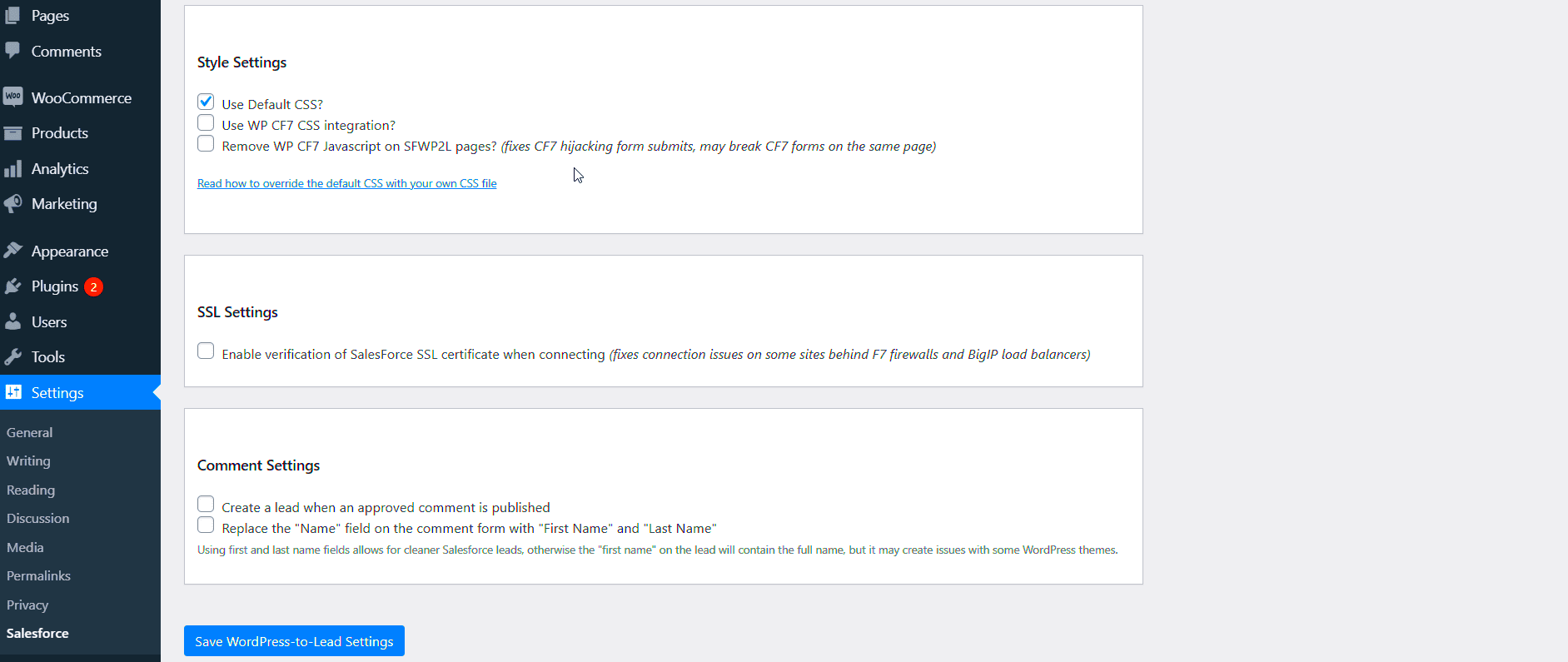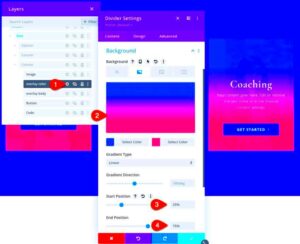Hey there! If you’re running a website powered by WordPress and are keen to up your game, then integrating forms with Salesforce could be a game-changer for you. Imagine collecting data from your visitors and having it automatically sync with your Salesforce account! This not only saves time but also boosts organization and efficiency. In this section, we’ll explore what WordPress forms are and how integrating them with Salesforce can streamline your workflows.
Why Use WordPress Forms with Salesforce?
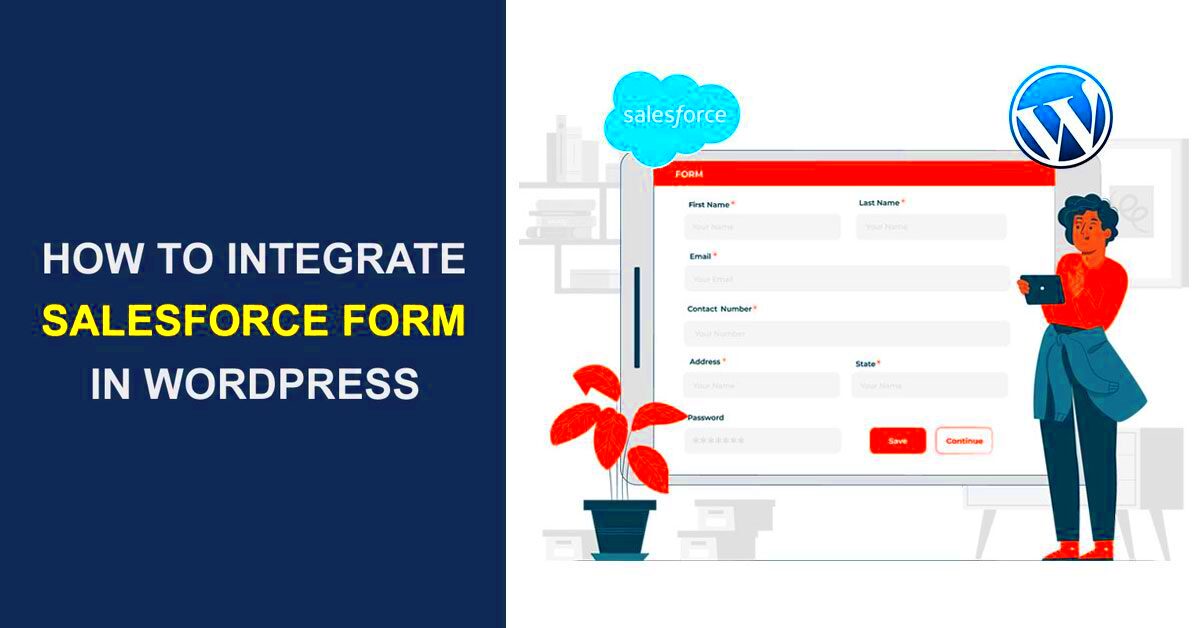
So, why should you consider using WordPress forms with Salesforce? Let’s dive into some punchy reasons that make this combo a powerful tool for any business:
- Efficient Data Collection: WordPress forms allow you to gather vital information like names, emails, and feedback directly from your site visitors. Integrating these forms with Salesforce means that as soon as a user submits a form, their details are instantly added to your Salesforce database.
- Seamless Workflow: With this integration, you can eliminate manual data entry. That’s right—no more copying and pasting data from your WordPress site to Salesforce! This streamlines your workflow, letting you focus on what really matters: nurturing your leads and customers.
- Improved Lead Management: When you use WordPress forms connected to Salesforce, you can easily track and manage leads. You can categorize them, assign them to the right team members, and follow up more efficiently.
- Enhanced Customer Insights: By combining data from your WordPress forms with Salesforce’s powerful analytics tools, you can gain deeper insights into your customers’ preferences and behaviors. This data can inform your marketing strategies and improve overall customer experience.
- Customizable Forms: WordPress offers a plethora of plugins to create customizable forms that suit your specific business needs. Whether you need simple contact forms or complex registration forms, there’s a solution out there for you.
In summary, integrating WordPress forms with Salesforce is not just a smart move; it’s a necessity for businesses looking to enhance their operational efficiency and improve customer relationships. Let’s jump into the tools and strategies you can employ for this integration!
Popular WordPress Form Plugins Compatible with Salesforce
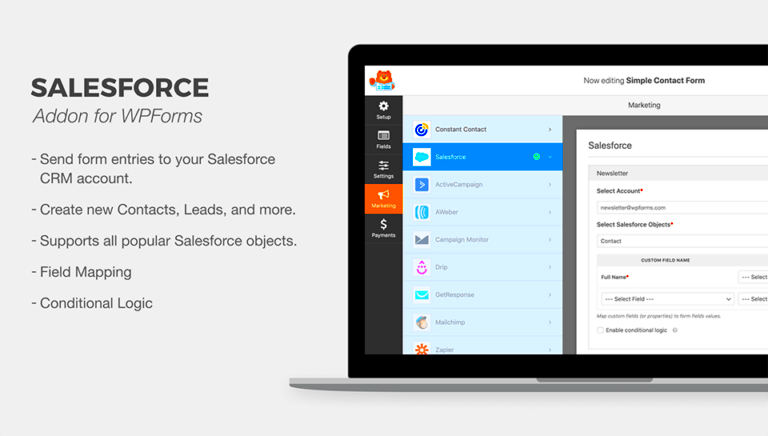
When it comes to integrating Salesforce with WordPress forms, you have plenty of options. Choosing a plugin that not only looks great but also works seamlessly with Salesforce can make all the difference in streamlining your data management. Let’s dive into some of the most popular WordPress form plugins that offer compatibility with Salesforce:
- Gravity Forms – This is a favorite among WordPress users for its robust features and easy-to-use interface. With the Gravity Forms Salesforce Add-On, you can automatically send form entries to your Salesforce dashboard, saving you hours of manual data entry.
- Ninja Forms – A flexible and user-friendly form builder, Ninja Forms allows you to set up Salesforce integration through its wide array of add-ons. You can create any form you need, from simple contact forms to complex registration forms.
- WPForms – Known for its drag-and-drop functionality, WPForms makes form creation a breeze. Its Salesforce integration helps you collect leads and synchronize data effortlessly in real time.
- Formidable Forms – This advanced form builder offers powerful features and allows for Salesforce integration via its add-ons. Formidable Forms enables you to build complex forms with calculations and conditional logic.
- Contact Form 7 – While this classic plugin offers basic form functionality, you can extend its capabilities with third-party plugins that enable Salesforce integration, providing a cost-effective solution for many users.
Each of these plugins provides unique benefits, so your choice will largely depend on your specific needs and level of technical expertise. Take the time to explore their features and see which one aligns with your goals.
How to Set Up Salesforce Integration with WordPress Forms
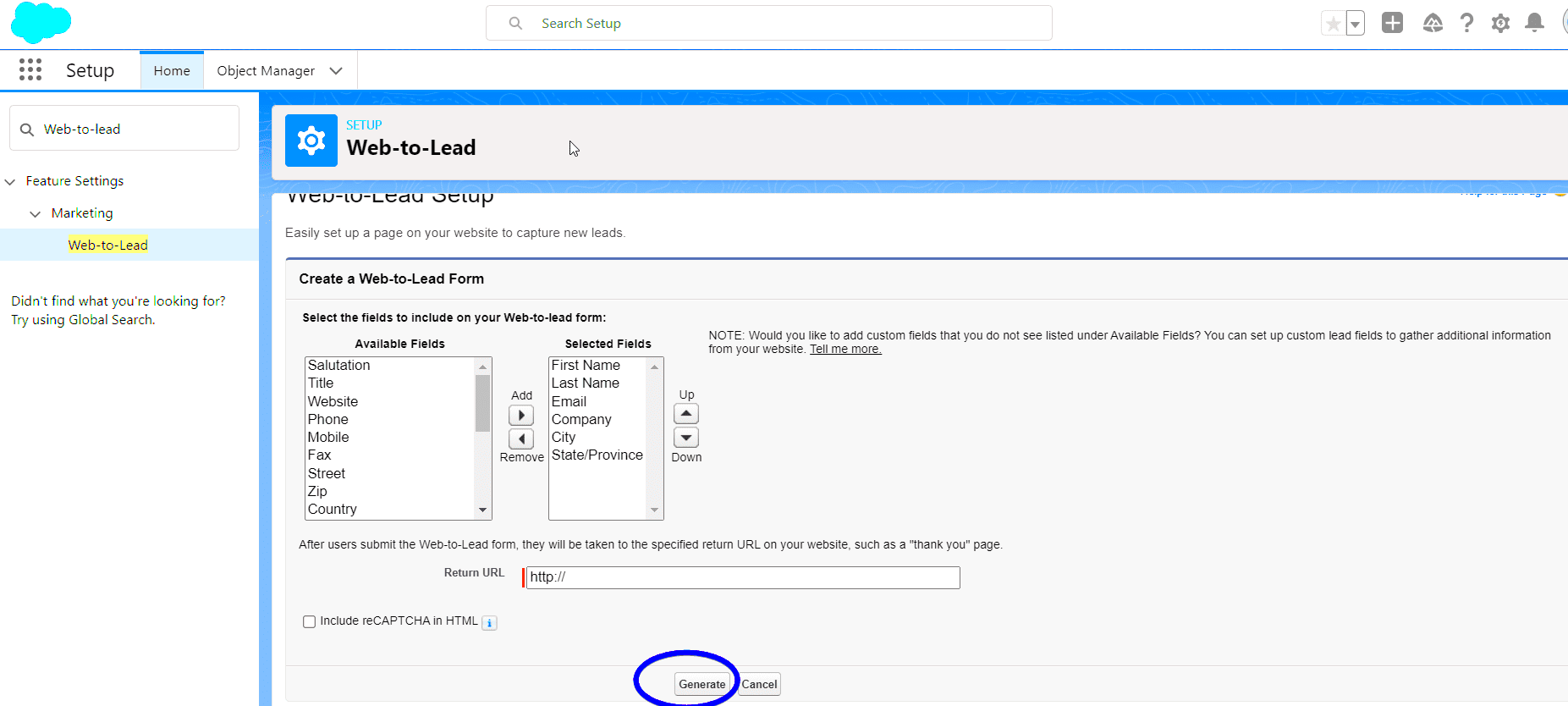
Setting up Salesforce integration with your WordPress forms can seem daunting at first, but it’s much easier than you might think! Here’s a step-by-step guide to help you through the process:
- Choose Your Plugin: Firstly, decide which WordPress form plugin you’ll use. For this example, let’s assume you’re using Gravity Forms.
- Install and Activate the Plugin: Go to your WordPress dashboard, navigate to Plugins > Add New, search for your chosen form plugin, and click Install Now. Once installed, activate it.
- Install the Salesforce Add-On: In the same plugin settings, look for the add-ons section and install the Salesforce Add-On.
- Connect to Salesforce: Go to the add-on settings where you will need to enter your Salesforce API credentials. You’ll likely need to create an app in Salesforce to get those credentials. Follow the prompts and input the required information.
- Create Your Form: Now it’s time to create your form! Use the drag-and-drop features to build an appealing form that collects the data you need.
- Map Your Fields: Specify which form fields you want to connect to Salesforce fields. This mapping ensures that when a form is submitted, the right data reaches the right place in your Salesforce account.
- Test the Integration: Before going live, always test the integration by submitting the form yourself and checking if the data appears correctly in Salesforce.
- Publish Your Form: Once everything looks good, embed your form into your desired page or post, and you’re ready to start collecting leads!
By following these steps, you should have a smooth and efficient integration between your WordPress forms and Salesforce. This setup will not only save you time but also improve your data accuracy immensely.
5. Best Practices for Creating Effective WordPress Forms
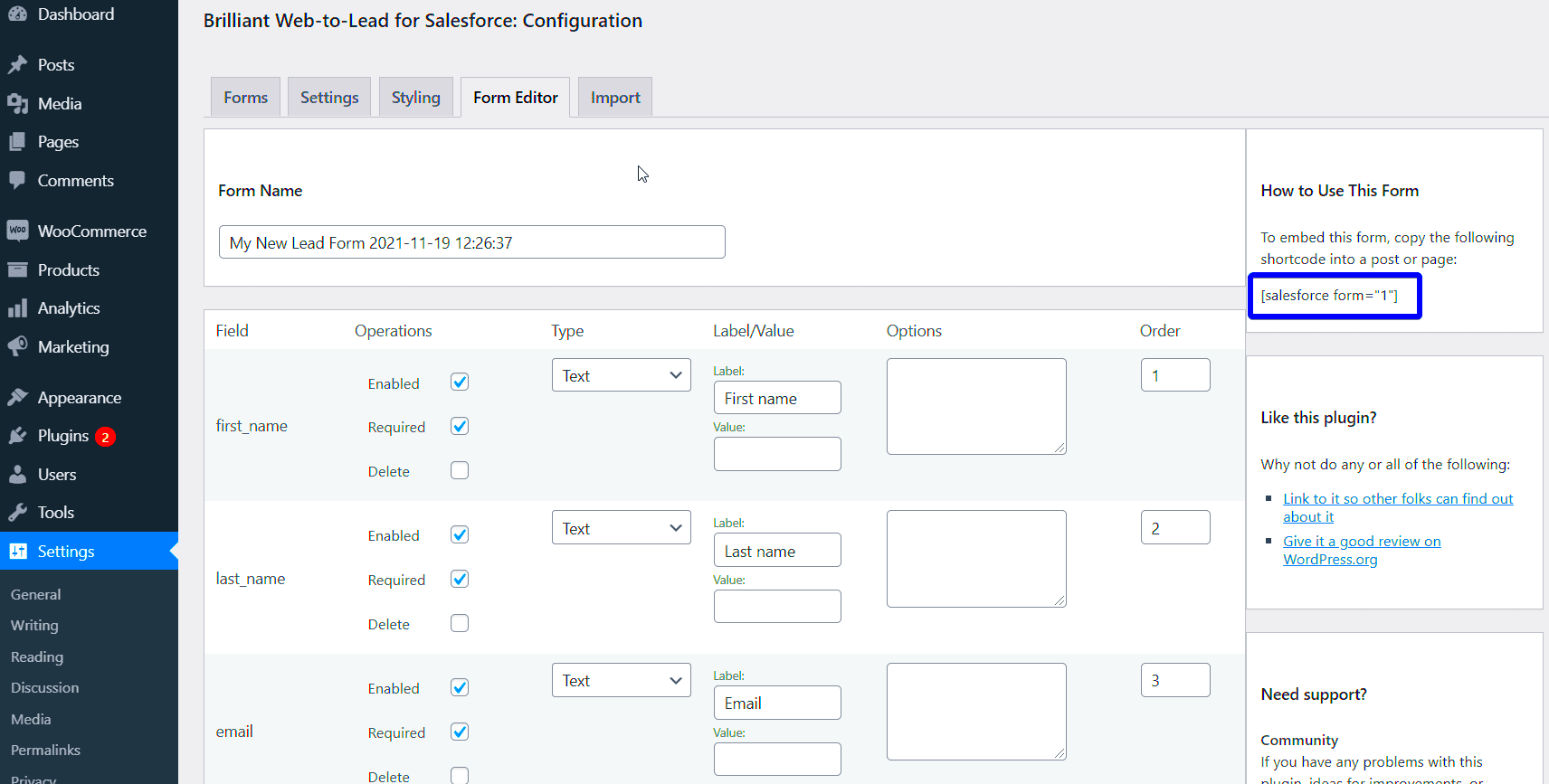
When it comes to creating effective WordPress forms, a few best practices can help ensure that you’re not only capturing the necessary information but also providing a great user experience. Here are some tips to consider:
- Keep it Simple: Aim for simplicity in your forms by only including fields that are absolutely necessary. A clean, short form encourages users to complete it. Think about what information is essential to your business and avoid overwhelming users with too many questions.
- Make Fields Clear: Each form field should have a clear label that describes what information is required. Using placeholders can help, but they should never replace proper labels.
- Use Conditional Logic: If your form has multiple sections, utilize conditional logic to show or hide fields based on previous answers. This keeps the form tidy and relevant.
- Design Matters: Make sure your forms aesthetically match your website’s overall design. A visually appealing form can significantly impact conversion rates. Use contrasting colors for call-to-action buttons to draw attention.
- Employ Validation: Implement validation to help users correct mistakes in real time. This way, they won’t submit incomplete or incorrect information.
- Mobile Responsiveness: With many users accessing websites from mobile devices, ensure your forms are responsive and easy to complete on smaller screens.
- Thank You Page or Message: After submission, provide a thank you message or redirect them to a thank you page. This leaves a positive impression and reassures users that their input has been received.
By following these best practices, you enhance both the functionality of your forms and the overall user experience.
6. Common Challenges and Solutions in Integration
Integrating WordPress forms with Salesforce can be a powerful way to streamline your marketing efforts, but it also comes with its own set of challenges. Here are some common hurdles you might encounter and how to overcome them:
| Challenge | Solution |
|---|---|
| Data Mapping Issues | Ensure your form fields align with Salesforce fields. Use clear naming conventions and double-check that they match in type and format. |
| Duplicate Records | Implement validation rules in Salesforce to prevent duplicate entries. You can also set up your WordPress forms to check for existing records based on unique identifiers, such as email addresses. |
| Field Limitations | Sometimes Salesforce has limits on the amount of data you can send per field. Make sure your WordPress form limits text fields and values accordingly to avoid errors. |
| API Errors | Connection issues can occur between your WordPress site and Salesforce. Regularly test your integration and consider using logging to help troubleshoot any API-related problems. |
| User Training | Ensure your team understands how to use the integrated system effectively. Provide training sessions on both the WordPress form and Salesforce functionalities. |
While integrating WordPress forms with Salesforce may present some challenges, staying informed and proactive can streamline the process, leading to efficient data management and enhanced marketing efforts.
7. Case Studies: Successful Salesforce Integrations with WordPress Forms
Integrating WordPress forms with Salesforce can be a game changer for many businesses. Let’s dive into a few case studies that highlight the success stories of organizations that took this step and the benefits they reaped.
Case Study 1: E-commerce Revolution
A popular e-commerce store specializing in eco-friendly products decided to integrate its WordPress forms with Salesforce. Before the integration, their customer support team faced challenges in tracking customer inquiries, leading to delays in responses and a drop in customer satisfaction. After implementing a user-friendly contact form linked to Salesforce, they saw:
- Enhanced Tracking: Customer queries were automatically logged in Salesforce, allowing for better tracking and follow-ups.
- Faster Response Time: The customer support team improved their response time by 30%.
- Increased Customer Satisfaction: Customer feedback indicated a rise in satisfaction rates post-integration.
Case Study 2: Non-Profit Networking
A non-profit organization focused on environmental conservation utilized WordPress forms to manage donor information and volunteer sign-ups. By integrating these forms with Salesforce, they experienced:
- Streamlined Fundraising Efforts: Donor data was captured efficiently, enabling targeted fundraising campaigns.
- Improved Volunteer Coordination: Volunteers could register and be categorized based on their skills, allowing for better project assignment.
- Robust Reporting: The organization could generate comprehensive reports on donations and volunteer engagement quickly.
These case studies illustrate that with the right integration of WordPress forms and Salesforce, teams can not only enhance their efficiency but also significantly improve customer and donor relationships.
8. Conclusion: Enhancing Your Workflow with WordPress and Salesforce
In today’s fast-paced business environment, having an efficient workflow is paramount. Integrating WordPress forms with Salesforce can be one of the most effective ways to simplify operations, improve data management, and enhance customer interactions.
Here’s why you should consider this integration:
- Centralized Data Management: By using Salesforce as a CRM, all your leads, contacts, and customer data are organized in one place, eliminating the chaos of scattered information.
- Automated Workflows: Say goodbye to manual data entry! With this integration, data collected through WordPress forms is directly sent to Salesforce, allowing your team to focus on other important tasks.
- Comprehensive Analytics: Access to detailed analytics helps you make informed decisions regarding marketing strategies and sales operations.
Ultimately, the integration of WordPress forms with Salesforce represents a powerful way to enhance your workflow, improve communication, and drive growth in your organization. If you haven’t already, now is the perfect time to start exploring this integration and unlock its potential for your business!

